Welcome to a journey through the realm of straightness—a fundamental concept in the world of engineering and precision manufacturing. Ever wondered how straightness impacts the quality of products or the efficiency of industrial processes? Join me as we explore the nuances and practical applications of this crucial element.
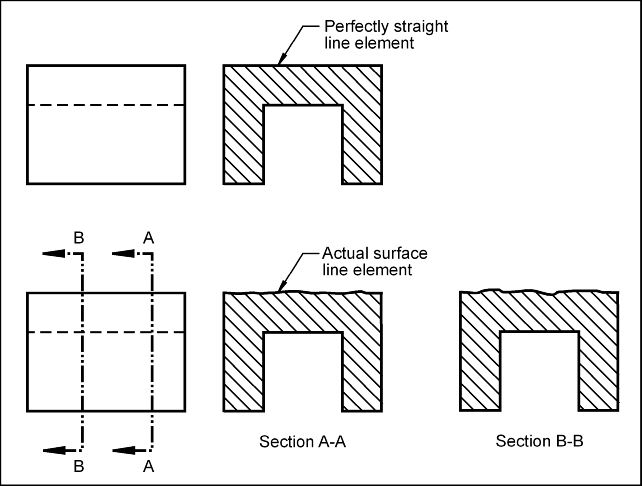
Straightness, as a fundamental concept in cnc machining parts, signifies the extent of deviation from perfect linearity. This attribute serves as the cornerstone for ensuring precision in various industries, ranging from automotive to aerospace. Picture an ideal line—straight, devoid of any bends or curves. In practical terms, achieving absolute straightness is challenging but pivotal for the integrity of structures, components, and mechanisms.
Straightness isn't merely about the absence of curvature; it encompasses the uniformity of alignment across an object’s length or surface. Engineers and manufacturers meticulously assess straightness to guarantee functionality, structural integrity, and adherence to specific design criteria.
This principle finds applications in myriad domains, from the creation of high-precision machinery components to ensuring the stability of architectural structures. Understanding straightness lays the foundation for comprehending its critical role in precision engineering.
Straightness isn't just a physical attribute but a guiding principle in precision engineering. It dictates the performance and reliability of mechanical components and structural elements. In precision machinery, deviations in straightness can lead to operational inefficiencies, increased wear and tear, or even catastrophic failures.
Actionable Insight: Dive deeper into the nuances of achieving and maintaining straightness across various industrial applications. Understanding the correlation between precision and straightness forms the bedrock of engineering excellence.
In the realm of Geometric Dimensioning and Tolerancing (GD&T), straightness assumes a pivotal role in establishing standardized precision. GD&T acts as a universal language for engineers and machining manufacturer, providing a systematic approach to defining and communicating geometric features and tolerances.
Within GD&T, straightness is defined as the condition where a line element or surface must lie perfectly in a straight path. This definition goes beyond the physical appearance of straightness, delving into the permissible tolerance levels and deviations allowed in a given dimension.
GD&T not only sets the standards for straightness but also offers a comprehensive framework for expressing tolerances in a clear and concise manner. Engineers utilize symbols and annotations to communicate specific requirements for straightness, ensuring uniformity in interpretation across the industry.
The integration of GD&T straightness standards serves as a catalyst for precision in various industries. From the manufacturing of intricate aerospace components to the production of medical devices, adherence to GD&T principles ensures consistency and reliability.
Action Step: Delve into practical examples where GD&T straightness standards have been instrumental in achieving precision in product design and manufacturing.
One of the primary advantages of GD&T straightness lies in its ability to enhance communication between design engineers and manufacturers. By providing a standardized language for expressing straightness requirements, GD&T reduces ambiguity and minimizes the chances of misinterpretation.
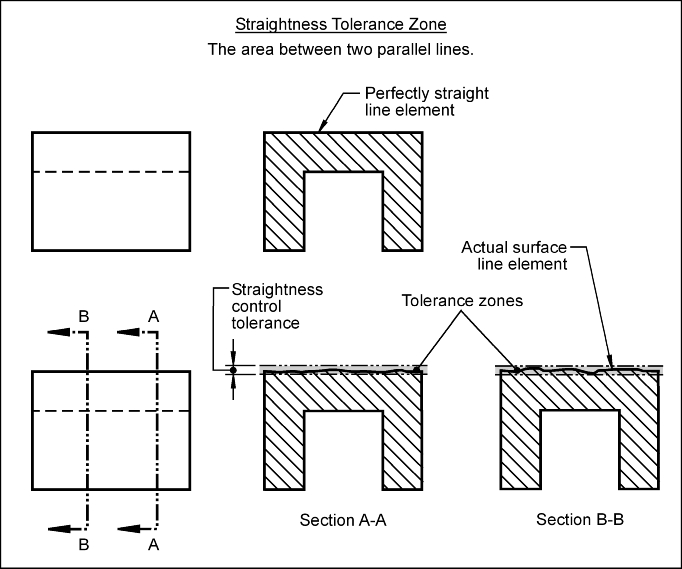
While both straightness and flatness contribute to the precision of components and structures, understanding the distinctions between these two geometric characteristics is paramount.
Straightness pertains to the deviation of a line or surface from perfect linearity, emphasizing the absence of bends or curves. On the other hand, flatness deals with the deviation of a surface from being perfectly planar. It is a measure of how uniformly a surface lies without any warping or undulations.
Distinguishing between straightness and flatness is crucial for engineers and manufacturers working across diverse industries. In the automotive sector, straightness is vital for the efficiency of engine components, ensuring smooth operation. Conversely, flatness is critical in applications like semiconductor manufacturing, where even minute deviations can impact performance.
Actionable Insight: Explore real-world scenarios where the differentiation between straightness and flatness plays a decisive role in product functionality and reliability.
While these concepts differ, their unified importance lies in precision engineering. Achieving optimal straightness and flatness is often a delicate balance, requiring advanced manufacturing techniques and cutting-edge technology.
Straightness tolerance stands as a cornerstone in precision engineering, delineating the acceptable deviation from an ideal straight line or surface. Its significance lies in maintaining functionality and integrity while accommodating variations inherent in manufacturing processes.
Establishing straightness tolerance sets the acceptable deviation boundaries within which a component or structure can vary from perfect straightness. This defined range acts as a safeguard against excessive deviations, ensuring that parts fit together seamlessly within an assembly.
Effective utilization of tolerance not only guarantees alignment but also aids in mitigating potential issues arising from misalignment, reducing the risk of mechanical failures or functional inadequacies.
Managing straightness tolerance is a meticulous process in precision engineering. Engineers employ sophisticated calculations and meticulous planning to ensure that tolerances align with the desired precision levels.
Actionable Insight: Explore case studies illustrating how meticulous management of straightness tolerance has contributed to the enhanced performance and longevity of precision-engineered products.
Determining appropriate straightness tolerance involves a careful balance between achieving desired precision and practical manufacturing feasibility. While tighter tolerances offer higher precision, they often increase production costs and complexities.
Balancing these factors demands a comprehensive evaluation of the component's criticality, cost implications, and the technological feasibility of achieving the desired tolerance levels.
Accurate measurement of straightness stands as a crucial step in ensuring adherence to specified tolerances and achieving the desired precision in engineering and manufacturing processes. Several methods and tools are deployed to assess and quantify straightness effectively.
Among the methodologies utilized for measuring straightness, coordinate measuring machines (CMMs) equipped with specialized probes stand out. These precision instruments meticulously gauge deviations from an ideal straight line or surface, providing detailed and accurate measurements.
Optical measurement techniques, such as laser-based systems, offer non-contact measurement capabilities, enabling high-precision assessments of straightness across various surfaces and intricate components.
A gamut of tools contributes to precise straightness measurements. From traditional rulers and straightedges to sophisticated metrology instruments like straightness gauges, dial indicators, and electronic measuring devices, each caters to different precision levels required across industries.
Actionable Insight: Explore industry-specific case studies highlighting the strategic utilization of specialized tools and methodologies for measuring straightness, showcasing their efficacy in ensuring precision and reliability.
Despite advancements in measurement technology, challenges persist in accurately assessing straightness, particularly in scenarios involving large-scale structures or complex geometries. Environmental conditions, material properties, and geometric intricacies can significantly impact measurement accuracy.
Richconn CNC Precision Manufacturing epitomizes the pursuit of precision in engineering. Their commitment to integrating the concept of straightness into manufacturing processes sets them apart as a leading force in precision engineering.
Richconn CNC stands as a symbol of precision manufacturing excellence, utilizing the principles of straightness as a cornerstone of their operational philosophy. By emphasizing straightness in their processes, Richconn CNC ensures that their produced components adhere to the most stringent precision standards.
Explore the practical applications of straightness within Richconn CNC's manufacturing endeavors. From the aerospace industry's demand for flawlessly straight components to the automotive sector's need for precision-aligned parts, Richconn CNC's commitment to maintaining strict straightness standards significantly elevates the quality and reliability of their products.
Actionable Insight: Dive into detailed case studies or projects that highlight how Richconn CNC turning machining and CNC milling machining focus on straightness has translated into superior product quality and customer satisfaction across various industries.
Uncover success stories that underscore the tangible impact of Richconn CNC's precision manufacturing rooted in straightness principles. Their dedication to precision not only ensures superior product quality but also positively influences industries by reducing complexities in assembly processes and enhancing overall system performance.
The journey through the intricacies of straightness unveils its pivotal role in precision engineering and manufacturing. From defining the fundamentals to exploring its practical applications, the significance of straightness in ensuring accuracy and reliability emerges as a foundational pillar across industries.
The exploration of Geometric Dimensioning and Tolerancing (GD&T) standards, comparison between straightness and flatness, understanding tolerance levels, and the art of measuring straightness offered insights into the meticulous world of precision.
Moreover, the spotlight on Richconn CNC Precision Manufacturing showcased a paradigm where straightness isn't just a concept but a guiding principle. Richconn CNC's commitment to embracing and implementing the principles of straightness in their manufacturing processes stands as a testament to the transformative power of precision engineering.
As industries continue to evolve, the quest for precision remains unwavering. Straightness, with its ability to define tolerances, align components seamlessly, and enhance overall system performance, remains an indelible cornerstone of engineering excellence.
In this pursuit of perfection, understanding and implementing the principles of straightness aren’t just endeavors for precision engineering; they are the pathways to elevating standards, driving innovation, and redefining the very essence of precision in the intricate world of manufacturing.
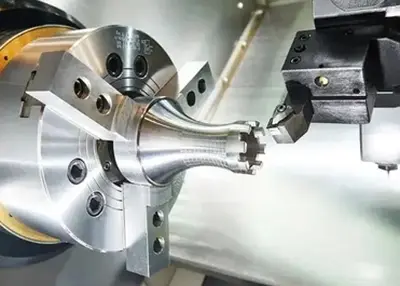 Challenge the Production of Mirror Discharge Mold Parts with H2 Grade Machining AccuracyMarch 2, 2023Challenge time: February 2023Challenge location: Longhua, Shenzhen, ChinaCustomer information: Singaporean high-quality mold vendorsNo nonsense, first upload the customer photo:Customer physical photo...view
Challenge the Production of Mirror Discharge Mold Parts with H2 Grade Machining AccuracyMarch 2, 2023Challenge time: February 2023Challenge location: Longhua, Shenzhen, ChinaCustomer information: Singaporean high-quality mold vendorsNo nonsense, first upload the customer photo:Customer physical photo...view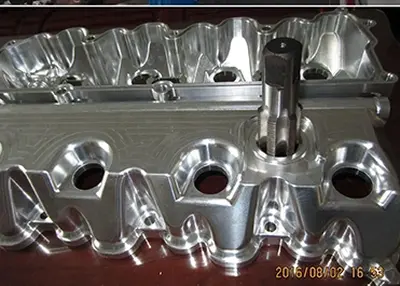 What Is the Difference Between Calcined Alumina and Aluminum Oxide?October 27, 2023In the refractory industry, calcined alumina and activated alumina are buzzwords, because they have become important synthetic raw materials for refractories, especially in some high-performance amorphous refractories. However, the difference between the two and whether the term is appropriate, there is ambiguity.view
What Is the Difference Between Calcined Alumina and Aluminum Oxide?October 27, 2023In the refractory industry, calcined alumina and activated alumina are buzzwords, because they have become important synthetic raw materials for refractories, especially in some high-performance amorphous refractories. However, the difference between the two and whether the term is appropriate, there is ambiguity.view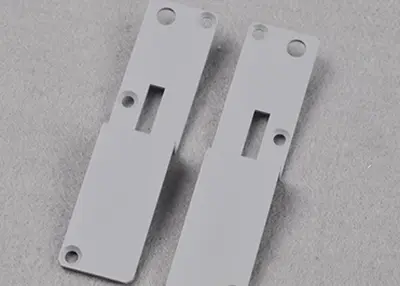 How to Reduce CNC CostsOctober 16, 2023In CNC machining, there are advances and improvements year after year. As a result, it is also becoming more complex. Consequently, it's also becoming more difficult to decide what to consider whe...view
How to Reduce CNC CostsOctober 16, 2023In CNC machining, there are advances and improvements year after year. As a result, it is also becoming more complex. Consequently, it's also becoming more difficult to decide what to consider whe...view What Is Mechanical Rack: Picking the Best for Your Custom PartsMay 22, 2024Delve into the world of equipment racks with this comprehensive article. Learn about their structure, design principles, materials, manufacturing processes, installation, commissioning, and more.view
What Is Mechanical Rack: Picking the Best for Your Custom PartsMay 22, 2024Delve into the world of equipment racks with this comprehensive article. Learn about their structure, design principles, materials, manufacturing processes, installation, commissioning, and more.view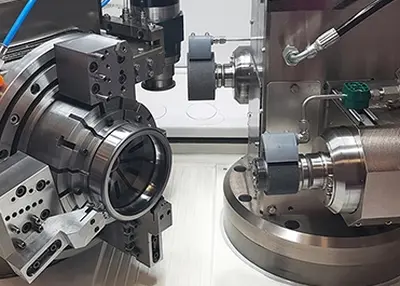 How Do I Get the Part to Meet the Machining Conditions?October 30, 2023Featuring intricate geometries, often complex CNC parts may require the machining of a series of contours, holes, and recesses to achieve the desired shape and size. Read on to learn more about the complexity of CNC machined part geometries and some of our best tips for reducing design complexity.view
How Do I Get the Part to Meet the Machining Conditions?October 30, 2023Featuring intricate geometries, often complex CNC parts may require the machining of a series of contours, holes, and recesses to achieve the desired shape and size. Read on to learn more about the complexity of CNC machined part geometries and some of our best tips for reducing design complexity.view The Top 7 CAD/CAM Software for CNC ProjectsMarch 18, 2024CAD/CAM software for CNC projects is a specialized tool used to design and control the machining of parts. Here are the top 7 CAD/CAM software for your choice.view
The Top 7 CAD/CAM Software for CNC ProjectsMarch 18, 2024CAD/CAM software for CNC projects is a specialized tool used to design and control the machining of parts. Here are the top 7 CAD/CAM software for your choice.view